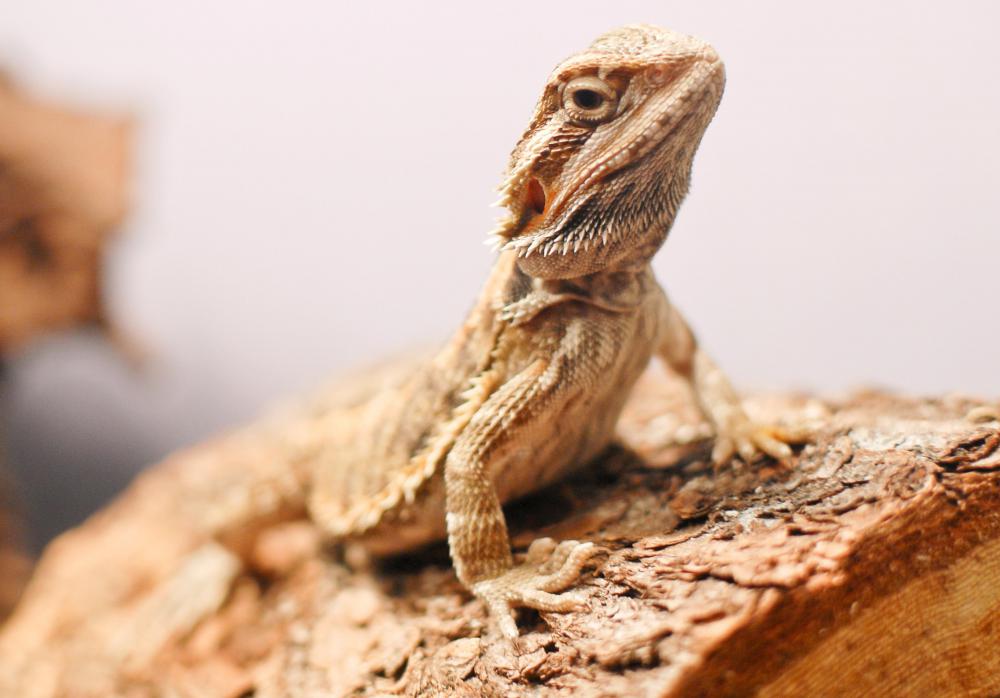What Do I Do If My Bearded Dragon Won't Eat?
Bearded dragons are wondrous, mysterious little creatures who can drive their human parents to distraction when they roll their lizard eyes at a cricket or a lettuce leaf. Lacking both the brainpower required to master English and the right oral configuration to pronounce most English words, when a bearded dragon won’t eat, it really can’t explain why. That means a lizard owner needs to do some basic sleuthing to determine if the dragon is feeling anxious, if habitat conditions need adjusting, or if it’s time to take the critter to the vet for a checkup.
Many types of lizards are a little on the not-so-touchy-feely side, and bearded dragons are especially sensitive to too much stress. While it’s fine for lizard lovers to lift their dragons out of the cage for a little scaly cuddle now and then, it’s important not to overdo it. Too much closeness makes a dragon want to breathe fire, and when there’s that much stress, it will often lose the desire for chow, and the bearded dragon won’t eat.

If there’s just too much activity going on around a bearded dragon’s environment, stress can also occur. If the cage is in a location where kids, dogs, and cats regularly tear through or stop by for a visit, the dragon probably won’t feel too secure. One thing an owner can do to make the habitat a little more comforting is to cover the sides of the cage. It might seem logical to move the cage, but because these little guys are creatures of habit, that can actually backfire into a full-fledged hunger strike.

Baby bearded dragons shouldn’t be housed with the big guys. Smaller dragons will refuse food if they feel intimidated by bigger brothers and sisters. The cage must be clean, as well, because a filthy environment is enough to put any lizard off its feed.
The environment bearded dragons require is very specific. The wrong temperature or too much humidity can be enough to make the lizard want to crawl under a rock. When a bearded dragon won’t eat, it often turns out to be caused by an environmental problem. They need higher daytime temperatures with part of the cage in shade. Ninety-five to 110 degrees Fahrenheit (35 to 43 degrees Celsius) is de rigueur, and a flat rock upon which to sprawl and bask is something every bearded dragon needs.

If the bearded dragon won’t eat despite all these requirements being addressed, it’s time for a visit to the vet. Possibly, the beast is simply going through a dormant period. If so, the vet can offer instructions for how to facilitate a little rest and relaxation. It’s also possible, however, the lizard is suffering from an illness or disorder that will require medical attention.
AS FEATURED ON:
AS FEATURED ON:













Discussion Comments
Well your lizard could be shedding. When my snake was about to shed, she wouldn't eat. I have the same problem with my lizard not eating, too.
Post your comments